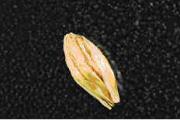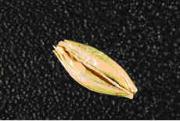Pre-harvest sprouting
The sprouting of grain while still in the head is caused by rain or damp conditions during the ripening stage of the crop. The most severe damage results from rainfall when the grain is mature. WA conditions are generally unsuitable for the pre-harvest sprouting of barley, however, this process has been experienced during very wet harvests.
Grain that has sprouted or shot prior to harvest is unsuitable for malting or sowing as there is a loss of seed viability and reduced storage time. In addition, processes associated with sprouting may lead to a reduction in grain yield and increase in fungal activity. Sprouted barley also has a lower value as animal feed.
Barley used for the production of malt must germinate rapidly in the malthouse. For this reason barley breeders, when breeding for the malting industry, have actively selected for varieties that have a lower seed dormancy. As a consequence, malting varieties are often more susceptible to pre-harvest sprouting.
Conditions experienced during the grain filling stage may also affect the susceptibility to pre-harvest sprouting of each variety.
To minimise the risk of pre-harvest sprouting, avoid as much damaging rain as possible through timely harvest of the crop.
Cleaved barley
The cleaving of barley is the splitting of the grain or husk, which is caused by a sudden drop in temperature followed by a rain event during the grain filling period when the grain is at the dough stage. When barley begins to 'turn' in hot drying conditions, waxes form on the outside of the grain and the husk begins to harden. The starchy endosperm inside the grain changes from a milky to a doughy texture. A sudden drop in temperatures of around 10oC, as can occur with an approaching rain front, causes the husk to rapidly harden. The proceeding rain is absorbed by the plant roots and moved to the filling grain. The grain becomes swollen and the dry, non-expanding husk can split at the crease, back or the side of the grain. Once split, the starchy endosperm is exposed to the elements.
Maltsters prefer to buy barley grain that is intact with no damage to the husk, embryo and starchy endosperm. Grain that is split or cleaved allows the water to quickly enter and saturate the inside of the grain during the malting process. This results in an uneven germination and the production of non-uniform malt or the leakage of grain contents out through the split making them unavailable for the brewing process.
There are two types of cleaving in barley:
- the peeling of the husk from the awn end of the grain along its side where the lemma overlaps the palea giving the appearance that the husk is too small to cover the entire grain.
- the grain splits along the crease, side or back of the grain. The split grain can be broken with a thumbnail pressed into the crease, whereas healthy barley grains can not be broken easily.

Figure 2a Split along side of grain

Figure 2b Split along crease of grain
